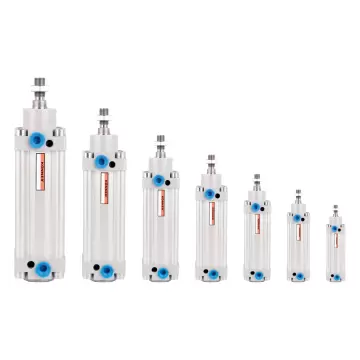Pneumatic cylinders are devices that can perform mechanical work by converting the pressure energy of the air into motion energy. Pneumatic cylinders, which are widely used in industrial automation systems, are produced in various sizes and types. In this article, we will give more detailed information about what pneumatic cylinders are and how they work.
Pneumatic cylinders work with a reciprocating system thanks to the air pressure inside. The piston in the cylinder moves by being pushed by the pressure of the air. This movement causes the cylinder to lengthen or shorten. Thanks to this movement, the work that pneumatic cylinders can do can change. For example, a pneumatic cylinder can push or pull a pallet, open or close doors.
Pneumatic cylinder can be diversified according to different working principles. While piston movement is provided by using both inlet and outlet air in double-acting cylinders, movement is provided by using only inlet air in single-acting cylinders. However, rotational cylinders are also available and these cylinders can rotate about an axis.
Pneumatic cylinders are cheaper and require less maintenance than hydraulic systems. Since air pressure is used, the risk of fire and explosion is also lower. Pneumatic systems can provide fast operation and high power output. Therefore, they are widely used in industrial automation systems.
Pneumatic cylinders are linear moving devices often used as part of pneumatic systems. Pneumatic cylinders are reciprocating cylinders that produce linear motion using compressed air. Some of the usage areas of pneumatic cylinders are as follows;

